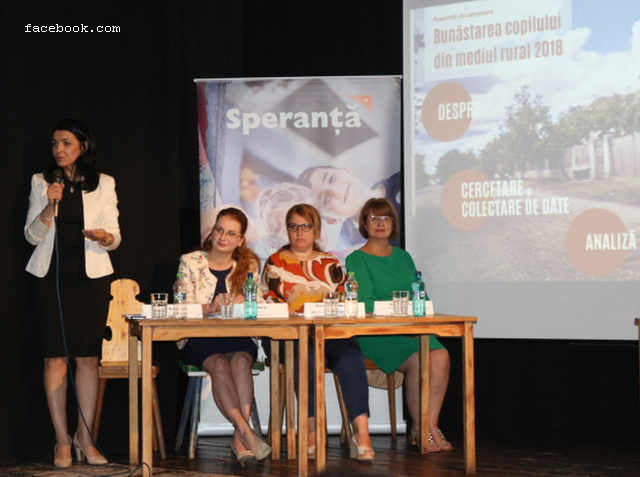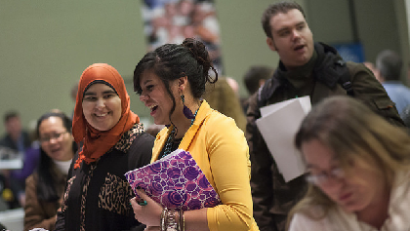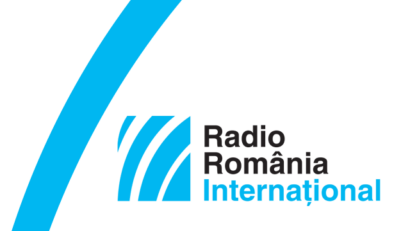Children education and welfare in rural Romania
Romanias rural areas account for 44%t of the countrys population and are home to some of the poorest households.

Christine Leșcu, 22.08.2018, 12:00
Romanias rural population accounts for 44%t of the countrys entire population. It is also here that, according to statistics, the number of households on the verge of poverty is greater than that in urban areas, and this affects children, too. For these children, poverty has long-lasting consequences. Poverty affects childrens school performance and reduces their development potential, and can generate inequalities on the labour market and society in general. The economic gap between the rural and urban areas is also reflected in school performance, such as the results obtained in evaluation exams before going to high school and the baccalaureate exams.
Ligia Deca is a state advisor working for the Presidents Office and the coordinator of the Educated Romaniaprogramme, run under the aegis of Romanias President. She tells us more about the situation of children living in rural areas as far as education is concerned.
“In 2017, for example, the average grade in the secondary school evaluation exams was 5.60 in the urban areas and 7.40 in the urban areas. It is a major gap. Although 54% of Romanias young people who turn 18 live in rural areas, only 30% of them have even registered for the baccalaureate exam. For those who have, the success rate is 13% lower than in the case of children from urban areas. There are regions where the infrastructure exists, such as sports halls and school buildings, but there are no resources to heat these places or purchase the required teaching materials.”
The situation of education in the rural regions is a reflection of the general state of affairs in these areas. The World Vision Romania Foundation, which has been assessing children welfare in rural areas since 2012, confirms that this how things are. Their 2018 results are based on opinion polls carried out in the last part of 2017. Daniela Buzducea, the national director of World Vision Romania, sums up respondents perceptions of their own incomes in the rural areas:
“One in two families places itself in a vulnerability area. Which means their incomes are not enough to get by or that their income is just enough for them to live from one month to the next. Families are trying to have more than one source of income. The myth that in the rural regions people dont do anything to help themselves is not true. Its a false perception. People work really hard and there are families with five different sources of income. Even so, between 38 and 41% of families say they find it really hard to get by from one month to the next.”
For around 60% of households, salaries have been the main source of income between 2014 and 2018. The number of countryside families with a salaried member increased between 2012 and 2016 but has begun to decrease again this year. At the moment, around 33% of rural households live below the poverty line and receive some form of social assistance because of their very low incomes. One of the most obvious consequences of poverty is school dropout. The rural dropout rate has decreased by 0.5% since 2016, but this is obviously far too little. The same World Vision survey on children welfare in the rural areas also tells us why children stop going to school. Daniela Buzducea:
“Of course the top factor is the cost of going to school. Public education is free of charge in Romania, but the costs of sending kids to school for rural families struggling with poverty are sometimes overwhelming. Another reason is that some children cannot cope with the academic tasks they are presented with in school. In other words, what they are taught at school does not enable them to learn enough to advance from one year to the next.”
Some 51% of the kids who drop out from school in rural communities say they no longer go to school because they have poor results. The school location and the means of getting there are further barriers to their access to education, although some progress has been made in this respect compared to previous years. Here is Daniela Buzducea once again:
“A comparative analysis indicates that 2% of the children walk to school, and that going to and from school now takes less time. On the one hand, in many villages there are school buses and more children live closer to the village centres. But on the other hand, the proportion of kids who say they miss classes in order to work has increased. It is actually a 50% increase compared to 2016, and this is another reason for concern. As many as 6.3% of the children who live in the countryside say they are tired because they work before or after school, and this is a 75% increase compared to 2016. Most of them do household work at home, but more than 2% say they also work for their neighbours.”
Another alarming fact is related to nutrition, which is extremely important for the normal psychological and physical development of children. Daniela Buzducea:
“A total of 9% of the children say they go to bed hungry, 6% only occasionally, but 3% say they are always hungry when they go to sleep. This is extremely alarming, because it means one in eleven kids in rural communities. A similar number said they only get a maximum of two meals a day, which means in fact that many of them only get one meal per day. Furthermore, we wanted to see the quality of their meals, and found out that one in eight children eat a loaf of bread per day.”
Given the effects of poverty on education and nutrition, expert recommendations for public policy makers emphasise the need to draw up programmes that are able to provide integrated solutions for all these problems in the rural environment.






























